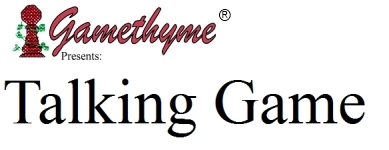Some of you may have noticed a lack of post last week - that's on me. I've been fighting a (really bad) cold, and lost a cat. Both things together kept me away from my computer for just over a week, and now I'm behind at everything.
A few weeks ago, I was at Fantasium's Beer & Board Games, and one of the people there commented to me, "you really like your programmed action games, don't you?"
And I do. I really do.
Programmed Action Games are games where you plan your turn (or turns) in advance, and then resolve them in a pre-set order. Usually (but not always) every player is planning simultaneously.
BoardGameGeek lists (as of this writing) 113 games that are categorized as Programmed Action.
Here are a few of my favorites:
The first time I encountered this mechanism was with the original Robo Rally, back in 1994 or 1995. Each player had to program eight actions each turn by playing cards. There were upgrades that granted special powers, and ways to blast each other. It was wild and chaotic and fun - despite being very controlled due to constraints on what you could do.
There is a new edition out, by the way, that dramatically changes some elements of the game. It's (reportedly) faster-playing and easier without losing any of its chaotic fun.
I spent weeks playing Robo Rally. Its miniatures were among the first I painted reasonably well.
The next time I remember noticing the programmed action mechanism was when I picked up Wings of War. Each round, you program your airplane's next couple of moves. If an enemy plane is in one of your firing arcs, you get to shoot at them. I didn't play this one very much, because my group was lukewarm on it. And then it was re-themed, tweaked, and re-packaged as X-Wing. And I couldn't afford to keep up with the collectible nature of that one.
Room 25 has been a favorite of mine for a very long time. Each round, you program two actions. Move, shove, slide, peek, or (character-specific) special. You can play fully-cooperatively with everyone working together to escape, or you can play semi-cooperatively with one or two players working against the rest of the party. The new Ultimate edition (which is where the link above goes) is the base game and the expansion together in one box. The previous release was marred with issues - first they did a small box for the base game and a larger box for the expansion. Then they re-released both, flipping the box sizes. People didn't know if the two boxes were compatible (they were), and it just caused a ton of confusion. The Ultimate edition clears all the confusion up. And, as an added bonus, they tweaked a couple of rules about revealing identities in the semicooperative mode of play.
I only recently encountered Risk: Europe, but I hope it sees a lot more play. Each player has eight cards, and you'll choose two per round. Those cards define what you can do that round. You can tax or spend, expand or maneuver. Players get their cards back only when they've used all eight. It's not a huge hit like Room 25 is for me, but it's definitely good and something I want to play again.

No comments:
Post a Comment